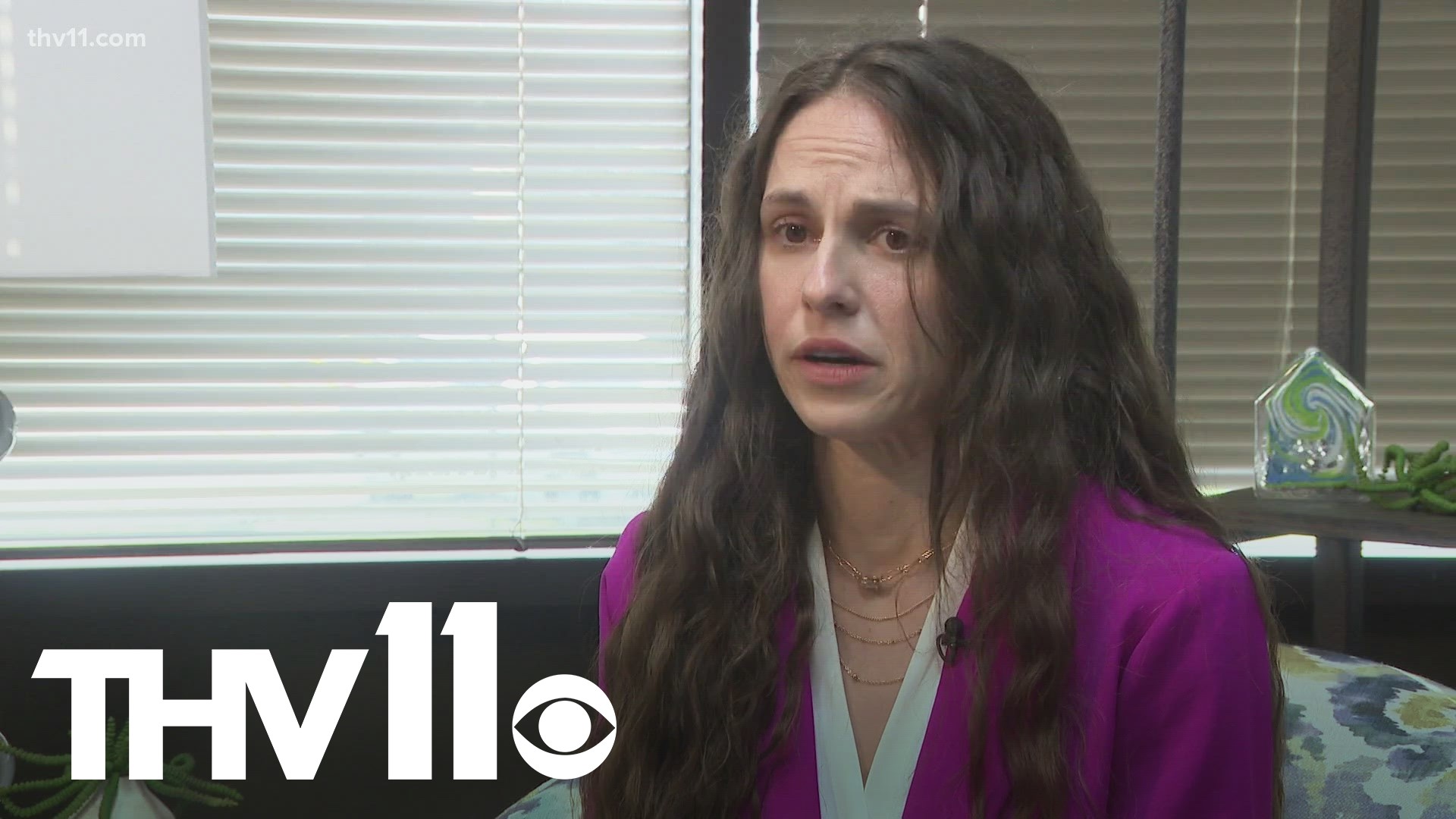LITTLE ROCK, Ark. — Hollywood often mimics real life with some extra drama thrown in for good measure— but one Little Rock woman is seeing that play out in a way she never expected.
Megan Parrish of Little Rock lives with a rare disease that's gaining new attention after the popular Netflix show 'Queen Charlotte: A Bridgerton Story’ aired earlier this year.
Acute Hepatic Porphyria, better known as AHP, is a disease many have never heard of.
“AHP is in the family of diseases called Porphyrias, which are a family of diseases where there are defective enzymes, either in the red blood cells in the bloodstream or the liver,” explained Dr. Peter Emanuel with CHI St. Vincent.
AHP isn’t widely known because the disease only impacts around 5,000 people in the U.S. and Europe combined.
“I felt very much like an island for a long time,” described Parrish.
She is one of those 5,000 living with AHP. Her symptoms and pain first began as she hit puberty.
“For me, mental illness and chronic illness are definitely there, they are a married couple,” Parrish said. “I experienced extreme abdominal pain, nausea, vomiting, I had episodes of dizziness, fainting, lots of exploratory surgeries.”
Parrish struggled in the dark for years, seeing dozens of physicians before finally receiving her diagnosis.
“Sometimes I was at the hospital four times a week, sometimes I was admitted inpatient for a month or more,” she recalled.
According to, Parrish’s current physician, this life of unending doctor’s visits is normal for those living with AHP.
“It can be very difficult to make the diagnosis and catch it at just the right time,” Dr. Emanuel said.
He confirmed that AHP patients can experience a load of different symptoms.
“It depends on which kind of Porphyria they have,” Dr. Emanuel explained.” “They'll manifest different ones, some can't go out in the sun at all, some end up in the emergency department frequently with severe abdominal pain, some have a little bit of everything. It wildly varies.”
There are also cases of neurological problems in AHP patients. It's that specific symptom bringing new attention to the disease, showcased in the popular Netflix show 'Queen Charlotte: A Bridgerton Story.’
In the series, viewers witness King George struggle with severe confusion, agitation, and memory loss. Parrish attested that yes, this can actually happen to AHP patients.
“There are aspects of it that are just a little exaggerated,” Parrish said. “There's definitely a few patients, me included, that have experienced agitation and confusion and anxiety, but maybe not to the extent that it's been portrayed on TV.”
She emphasized that the dramatization doesn't bother her because regardless, it's actually helping bring new awareness to the disease.
“That's what makes good TV,” Parrish said. “People outside of the community are talking about it now.”
It's only assumed that King George suffered from the AHP disease way back in the 1700s. While that was centuries ago, Dr. Emanuel said there has been little movement in the diagnosis or treatment of AHP since then.
“Unfortunately, there's not a lot of research going on, because they're very, very rare diseases,” He explained. “There's some new developments in terms of therapies, but we still don't know what causes it by any means.”
However, Parrish said that the hope for advancement keeps her going.
"Trying to shorten up the diagnosis process because it takes an average patient 15 years to be diagnosed,” she explained. “The six years it took me is a fraction of what the average is, so I consider myself lucky. I think a lot of hope for the future of Porphyria."
As for her future, she never pictured her journey would be in as good a spot as it is now.
"It was so out of control for so long and I think that's how a lot of other patients feel, you just feel so trapped,” Parrish explained. “What I’ve just been doing is making up for all the lost time."
Dr. Emanuel added that while it’s positive for Parrish to have a lessening of her symptoms and attacks, there is still no answer as to why.
“Is it due to her age or her knowing the triggers?” Dr. Emanuel questioned. “Probably all of the above. My patient was diagnosed in her late teens and certainly over the last 10 years she's had a lessening of her symptoms and attacks.”
He added that doctors don’t typically have AHP or other types of Porphyrias on their radar.
Click here to view Two of Me: Living with Porphyria, which chronicles the experiences of people living with AHP and the real-world impact versus what is seen on TV.

